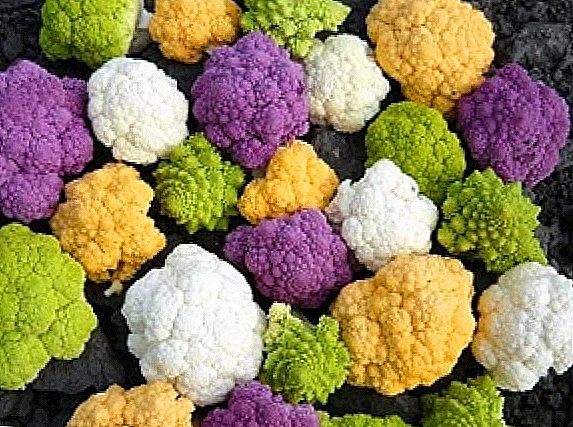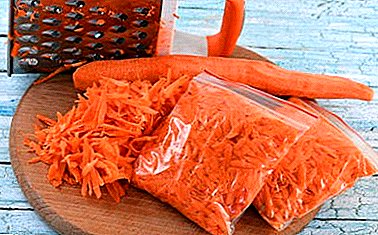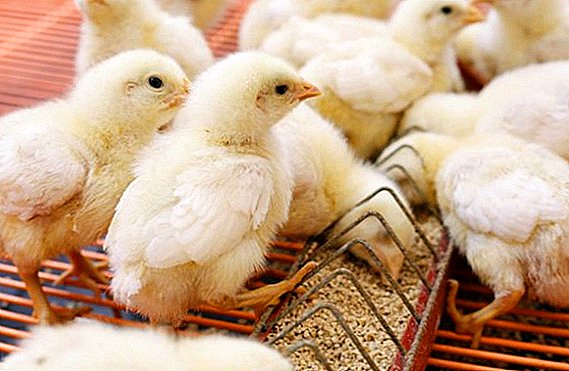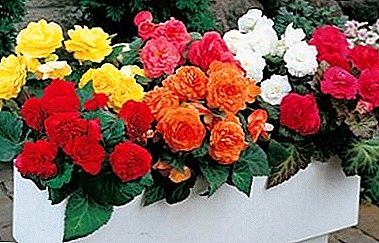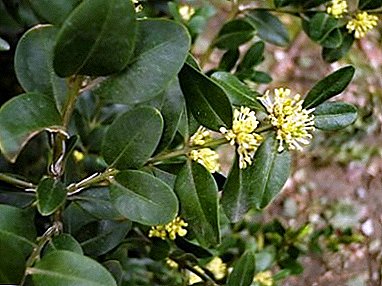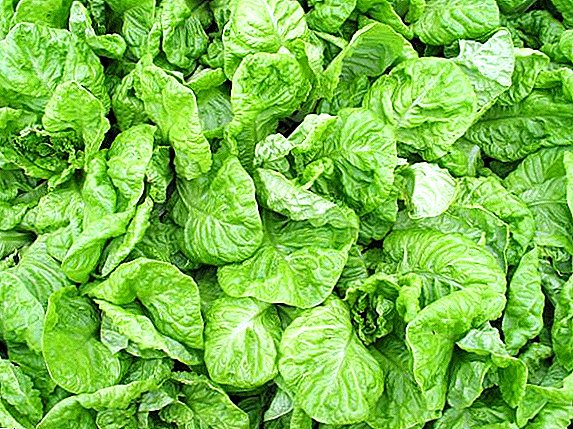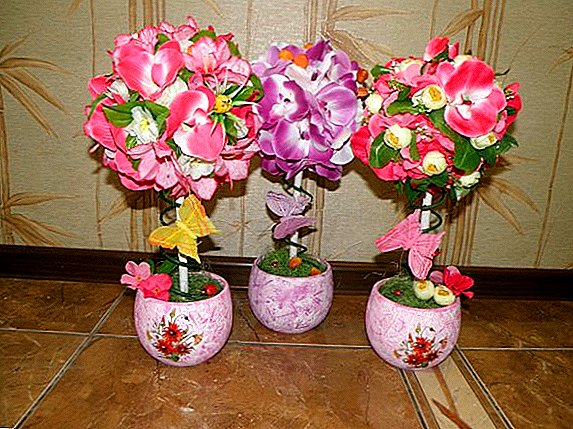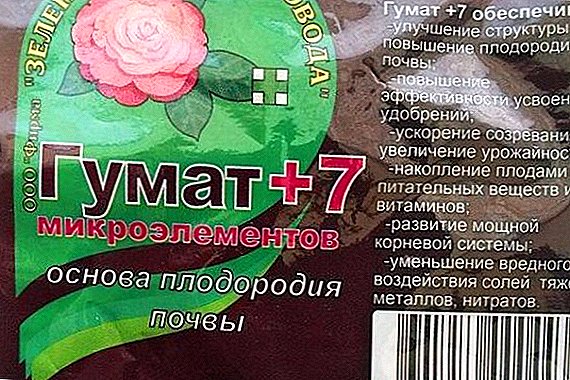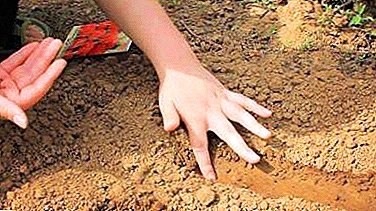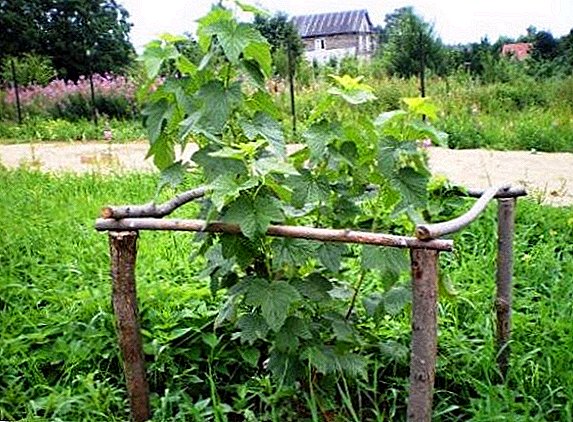 Black, red and even white currants are quite popular crops in our latitudes, therefore, many summer residents are interested in currant care after winter. In this article we will talk about the nuances of pruning, feeding, watering and processing from the pests of these plants, and also dwell on the issue of protecting the bushes from possible spring frosts.
Black, red and even white currants are quite popular crops in our latitudes, therefore, many summer residents are interested in currant care after winter. In this article we will talk about the nuances of pruning, feeding, watering and processing from the pests of these plants, and also dwell on the issue of protecting the bushes from possible spring frosts.
Features spring pruning currants
Pruning currant bush - one of the main conditions for its good fruiting. This procedure can be performed in autumn or early spring, before bud break. In the latter case, they say more about sanitary pruning, which provides for pruning of all the frozen tops during the winter (to healthy buds), broken and diseased branches. However, as for the dry parts of the plant, they can be cut off at any time of the year, as soon as you notice them. All collected branches, as well as old leaves, which are often under bushes from last year, must be burned, since it is in them that the pests overwinter, which are activated with the arrival of spring.
Important! Unlike black currant, it is better to cut white and red in the spring (in the extreme case - in the summer), without delaying this procedure until the autumn.The formation of a bush, in each such case, occurs in a similar pattern, except that the tops of last year's increments do not have to be pinned (which cannot be said about black currants), and two- and three-year-old shoots do not need to be shortened. Simply put, when growing red currants, spring care in terms of pruning is only to remove old branches (parts of the bush, which in the case of this species must reach seven or eight years old), excess zero shoots and broken, diseased or frozen branches.
 Old, but still productive branches can be shortened to the nearest strong lateral branching, thereby stimulating the growth of side shoots, increasing the size of the berries and the lifespan of the bush. A properly formed bush should consist of 20-25 branches, from 1 to 8 years old.
Old, but still productive branches can be shortened to the nearest strong lateral branching, thereby stimulating the growth of side shoots, increasing the size of the berries and the lifespan of the bush. A properly formed bush should consist of 20-25 branches, from 1 to 8 years old.Watering and caring for the soil in the spring
Answering the question "How to care for currants?" we can not ignore the topic of irrigation, which, together with tillage plays an important role in obtaining a good crop of currants. First of all, it is worth noting that both black and red and white currant are moisture-loving cultures, which is due to their biological characteristics. The lack of moisture in plants causes growth retardation, the grinding of berries and their subsequent shedding. In addition, dry conditions in the post-harvest period often lead to freezing of bushes in winter. It is especially important to irrigate during the most crucial phases of plant development: during the period of active growth, formation of ovaries, berry pouring and after harvesting, that is, mainly in spring.
 The first time the currant is watered immediately after planting, at the rate of 5-6 liters of fluid per bush. Further, the most effective are considered to be groundwater and drip irrigation, which allow you to apply the liquid directly to the root system of plants. During one growing season, currants require from 3 to 5 waterings. Also, a similar procedure is carried out by injecting liquid into pre-made grooves or grooves, 10-15 cm deep. They are made around a bush, at a distance of 30-40 cm from it.
The first time the currant is watered immediately after planting, at the rate of 5-6 liters of fluid per bush. Further, the most effective are considered to be groundwater and drip irrigation, which allow you to apply the liquid directly to the root system of plants. During one growing season, currants require from 3 to 5 waterings. Also, a similar procedure is carried out by injecting liquid into pre-made grooves or grooves, 10-15 cm deep. They are made around a bush, at a distance of 30-40 cm from it.
Do not forget about the methods of moisture conservation in the soil. So, spring care for black, red or white currants also provides for loosening, mulching the soil and cleaning it from weeds. The optimal frequency of loosening the soil around the bushes is considered once every 2-3 weeks, while avoiding the formation of crusts and weeds, as it dries the ground.
The active root system of the currant is placed in the upper loose and nutrient layers, therefore, in order not to damage the roots, the soil next to the bushes is loosened very carefully, without going more than 6-8 cm. From the bush a considerable distance, it is possible to loosen or dig through the bushes. depth up to 12 cm.
Moisture will be well preserved if the soil around the bush is mulched with organic material. (peat, grass, peat compost). In this case, it can be loosened much less.
 Recently, synthetic materials have been increasingly used for mulching currant bushes: black opaque film, parchment, roofing material, plant protection paper, etc. This allows you to do without loosening throughout the summer, but with the arrival of autumn, it is better to remove the shelter, which will improve air exchange in the ground, apply the necessary fertilizers, or perform any other work.
Recently, synthetic materials have been increasingly used for mulching currant bushes: black opaque film, parchment, roofing material, plant protection paper, etc. This allows you to do without loosening throughout the summer, but with the arrival of autumn, it is better to remove the shelter, which will improve air exchange in the ground, apply the necessary fertilizers, or perform any other work.
Did you know? Currant is found on all continents except Antarctica and Australia, and in its wild form, there are about 150 species of this plant..
Currant treatment in spring from pests and diseases
Like any other plant, the described bushes suffer from various diseases and attacks of pests, because of which it is very difficult to care for currants, in particular, in spring. The most dangerous pest is currant bud mite, the presence of which is evidenced by large overgrown buds, which look like small bright cabbages. With the arrival of spring, they are simply unable to open up, which is why they gradually die off, which affects the quantity of the crop. So, in one kidney there can be up to a thousand individuals of a pest and, having got out of their shelter, they quickly settle on the territory, with what they are helped by birds or wind.  If the bush does not have a lot of affected buds, then they can simply be pulled out and burned, but if the affected areas are too extensive, then such a currant bush is completely removed.
If the bush does not have a lot of affected buds, then they can simply be pulled out and burned, but if the affected areas are too extensive, then such a currant bush is completely removed.
When caring for black currants in the spring, it is not uncommon use of chemical agents in the fight against the invasion of pests. However, in this case, it is necessary to strictly adhere to the recommended terms of spraying, since the growing season of the plant starts early, and the changes occur very quickly. To get rid of the above-mentioned bud mite, currant bushes and the soil under them can be sprayed with a solution of Chlorofos or a mixture of colloidal sulfur and Karbofos, at a rate of 100 and 20 g per 10 liters of water. The treatment of plants with these preparations should also be carried out before the buds swell, because otherwise it will be very difficult to get rid of the tick.
If we are talking about powdery mildew, then Fundazol (15 ml of the drug is diluted in 10 liters of water) or copper sulfate (100 g per 10 liters of water) will help to get rid of it; moreover, it is necessary not only to spray the bushes, but also to water the beds, on which currant bushes grow.
 On the tops of the shoots, the leaves often damage the aphids, due to which the leaf plates curl and frown. If no action is taken, it will completely destroy the bush. The presence of a pest can be determined by the appearance of many ants that feed on its secretions.
On the tops of the shoots, the leaves often damage the aphids, due to which the leaf plates curl and frown. If no action is taken, it will completely destroy the bush. The presence of a pest can be determined by the appearance of many ants that feed on its secretions.
Before blooming buds on the bushes, you need to process the currant with Furanon or simply scald the plant with boiling water. In the case when there are already leaves on the branches, but inflorescences have not yet appeared, "Intavir", "Rovi-Chicken", "Tanrek", Bordeaux mixture or copper vitriol solution, based on 100 g of substance, will work well to combat this problem. 10 liters of water. Also a good help "Karbofos."
Often care for currants in the spring (in particular in the country), is accompanied by the treatment of plants from anthracnose - fungal parasite, which appears small brown spots on the leaves of the bush. The process begins with the lower branches and gradually moves up. As in the previous cases, it is important to start timely treatment before the first leaves appear, however, if you notice the affected leaf plates too late,  You can try to treat them with a solution of ash, Bordeaux mixture or 3% solution of iron sulphate (300 g per 10 l of water). Very often, these formulations still help to cope with the problem, only spraying is best done in the evening, repeating the treatment after half an hour.
You can try to treat them with a solution of ash, Bordeaux mixture or 3% solution of iron sulphate (300 g per 10 l of water). Very often, these formulations still help to cope with the problem, only spraying is best done in the evening, repeating the treatment after half an hour.
Did you know? In Russia, currants have become a national berry crop, and its numerous species and varieties can be found in every corner of the country.
How to fertilize currants in the spring, plant nutrition
Caring for currant spring, provides for plant nutrition, but most often this procedure is carried out in the second or third year after planting bushes. However, if your plants are forced to exist on depleted soils, then fertilizer applied to the planting pit when planting seedlings may not be enough. Moreover, not all blackcurrant seedlings are strong and completely healthy, which means that feeding them will be a very important component in the care of spring.
Strong green bushes always stand out against the background of their pale and weak relatives, so it will be easy for you to identify currants in need of a large number of useful trace elements. With the advent of spring, nitrogen-containing fertilizers are applied at the root of the plants, since they contribute to their better growth and development after the winter period.
 The first root dressing can be carried out immediately after bud break on the branches. To do this, 30 g of ammonium nitrate should be diluted in a bucket of water and pour the resulting compound under a bush (a ten-liter bucket of ready-made feeding is needed for one bush). Repeated fertilization occurs during the period of care for currant bushes with berries tied to them. In this case, mineral fertilizers are added to the soil, which contain phosphorus and potassium (but not chloride), although you can also use organic matter prepared by yourself as an alternative to mineral elements. Ash and humic fertilizers are perfect for this role.
The first root dressing can be carried out immediately after bud break on the branches. To do this, 30 g of ammonium nitrate should be diluted in a bucket of water and pour the resulting compound under a bush (a ten-liter bucket of ready-made feeding is needed for one bush). Repeated fertilization occurs during the period of care for currant bushes with berries tied to them. In this case, mineral fertilizers are added to the soil, which contain phosphorus and potassium (but not chloride), although you can also use organic matter prepared by yourself as an alternative to mineral elements. Ash and humic fertilizers are perfect for this role.
Some experienced gardeners often resort to foliar feeding. For example, when flowering currant, you can dilute 0.5 tsp of boric acid in 10 liters of warm water (up to 40 ° C) and spray the bushes with the resulting composition. This treatment will increase the rate of growth of shoots and increase the yield by 2-3 times. Also, during the spring care of the currant, at the time of the appearance of the first ovaries, they often prepare a mixture of 60 g of urea, 150 g of superphosphate and 10 liters of water, which is also sprayed with bushes. The shoots become very strong, and the tastes of future berries are significantly improved.
How to protect the currants from frost
 In the middle zone, where we are with you, shedding currant ovaries can be called quite common, since despite the abundant flowering of the plant, in the first 10-15 days after its completion almost all ovaries may be under the shrub. The most characteristic reason for what is happening are spring frosts (matinees), which, even in April, complicate the care of currants. In our climatic zone, they end only closer to the end of May, but are not excluded until the tenth of June (that is, they can drop at the end of the currant flowering and during the formation of ovaries).
In the middle zone, where we are with you, shedding currant ovaries can be called quite common, since despite the abundant flowering of the plant, in the first 10-15 days after its completion almost all ovaries may be under the shrub. The most characteristic reason for what is happening are spring frosts (matinees), which, even in April, complicate the care of currants. In our climatic zone, they end only closer to the end of May, but are not excluded until the tenth of June (that is, they can drop at the end of the currant flowering and during the formation of ovaries).
To protect the bushes from frost apply smoke and spraying. In the first case, for the procedure you need cropped raspberry branches and strawberry leaves, although last year’s tops of potato, straw manure and straw are also a good fit. The prepared material is piled up in heaps, the length and width of which should reach 0.8 meters, and height - 0.7 meters. They are placed in one line at a distance of 3-4 meters from each other, and from the side of the section from which early in the morning , in the windless air will drag.
Important! Smoke starts as soon as the air temperature drops to -1 ° C and ends an hour after it reaches zero, or rises even higher.Another good way to protect currant flowering plants from frost is to spray them with hot water, and when there is a risk of severe frost, the procedure is carried out several times (preferably 5-6). At the same time, it is necessary to irrigate abundantly not only the bushes themselves, but also the ground beneath them. It is noteworthy that the first spraying is carried out at one in the morning, the second - with the start of freezing, and the third at the same hour after the second, etc. Even if you just moisten the soil with hot water - this will reduce the negative impact of frost on the plant.
 In addition to late spring frosts, the weather conditions have a great influence on the curvature of currant berries. For example, in cold and windy weather, in the process of flowering, the age of insects is very difficult, which means that the plant will be poorly pollinated. At the same time, when the weather is hot and too dry, the stigmas of the pistils dry up, and the period of possible pollination of flowers is significantly shortened. Therefore, it is desirable to personally create in the garden optimal conditions for normal pollination of bushes: plant only plants in protected areas, select varieties in accordance with the climatic region, humidify the air and soil in hot weather, and breed bees.
In addition to late spring frosts, the weather conditions have a great influence on the curvature of currant berries. For example, in cold and windy weather, in the process of flowering, the age of insects is very difficult, which means that the plant will be poorly pollinated. At the same time, when the weather is hot and too dry, the stigmas of the pistils dry up, and the period of possible pollination of flowers is significantly shortened. Therefore, it is desirable to personally create in the garden optimal conditions for normal pollination of bushes: plant only plants in protected areas, select varieties in accordance with the climatic region, humidify the air and soil in hot weather, and breed bees.
Some summer residents consider currants to be a rather unpretentious plant, but caring for them in the spring can raise certain questions, when answering which will be useful advice from experienced gardeners. Only with sufficient information and the implementation of all the above recommendations, you will be able to get a bountiful harvest of excellent berries.


